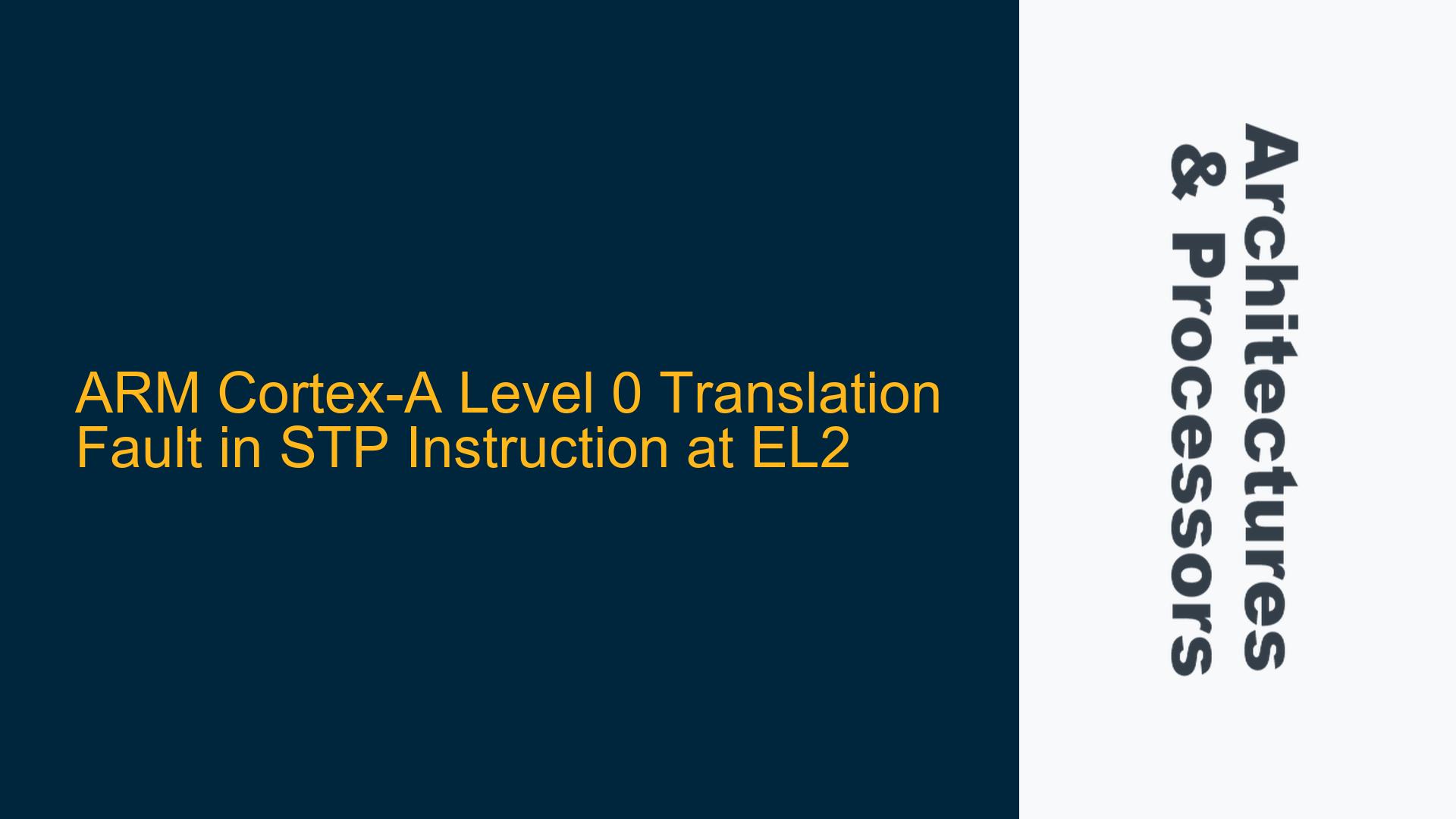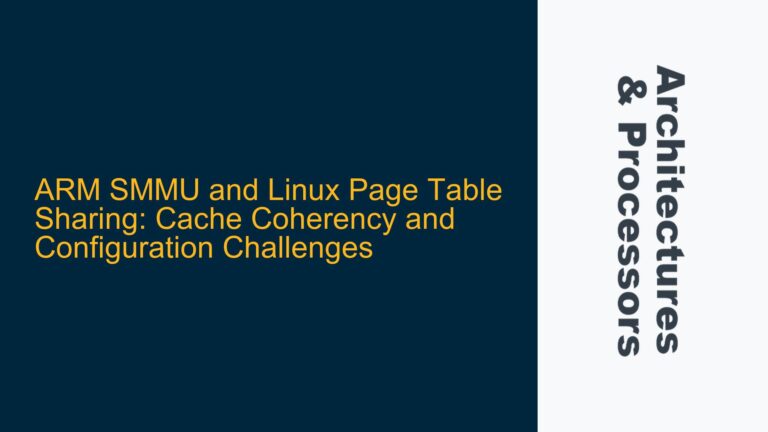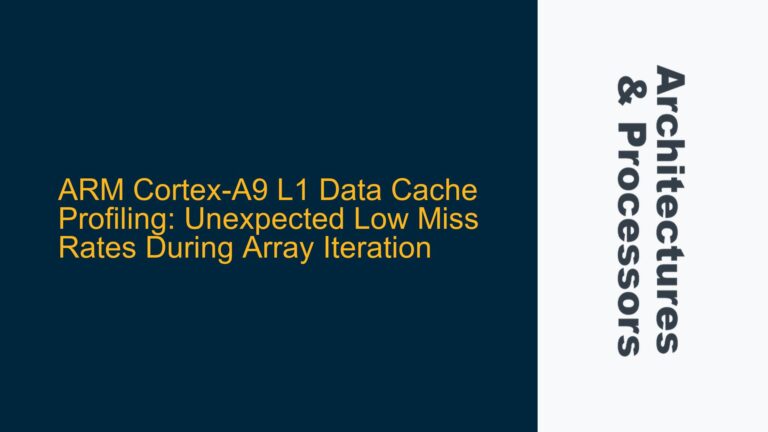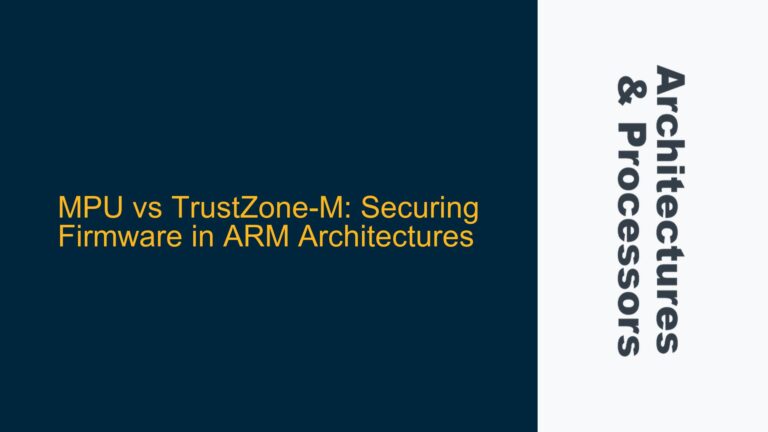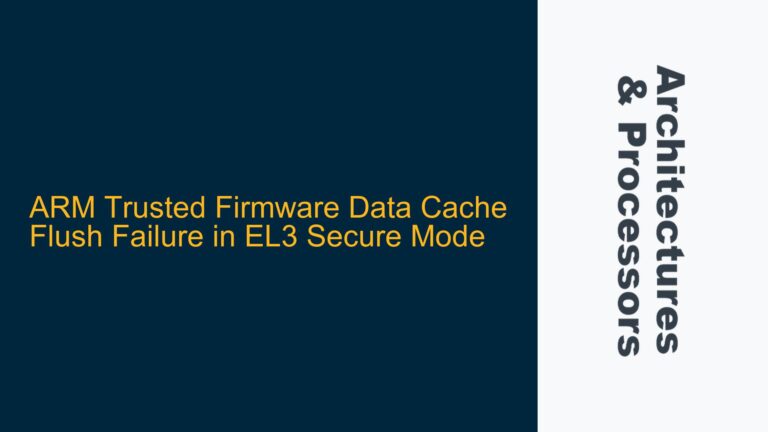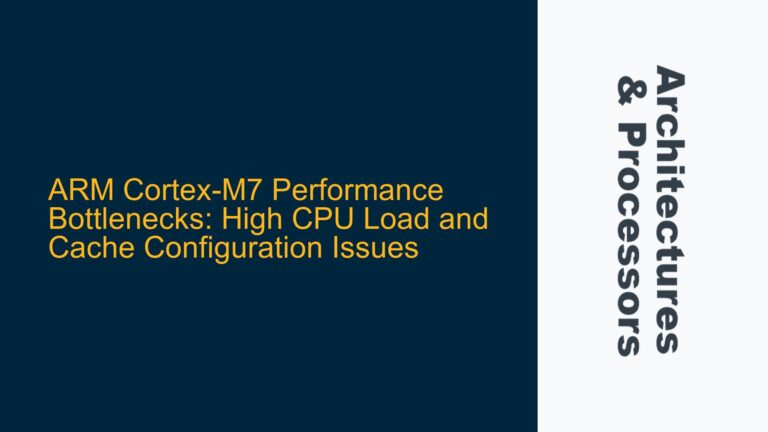ARM Cortex-A Level 0 Translation Fault During Stack Pointer Adjustment
The issue at hand involves a Level 0 Translation Fault occurring during the execution of an STP (Store Pair) instruction in an ARM Cortex-A processor operating at Exception Level 2 (EL2). The fault manifests when the stack pointer (SP) is adjusted by subtracting 48 bytes (#-48) as part of the STP instruction. The fault is indicated by the Exception Syndrome Register (ESR) value 0x96000044, which decodes to a Level 0 Translation Fault. The Fault Address Register (FAR) captures the faulting address as 0x4000000012108d60, which is derived from the original stack pointer value 0x0000000012108d90 minus 48 bytes. Notably, the 62nd bit of the faulting address is set to 1, which is unexpected and suggests a potential issue with address translation or memory management.
The STP instruction in question is:
stp x29, x30, [sp, #-48]!
This instruction attempts to store the pair of registers x29 (frame pointer) and x30 (link register) into the memory location pointed to by the stack pointer after decrementing it by 48 bytes. The fault occurs during this memory access, indicating that the address 0x4000000012108d60 is either invalid or not properly mapped in the translation tables.
The fault is particularly interesting because the stack pointer value 0x0000000012108d90 appears valid, but the resulting address 0x4000000012108d60 has its 62nd bit set, which is not typical for a standard address calculation. This suggests that either the address translation mechanism is misconfigured, or there is a software bug in the hypervisor’s memory management logic.
Misconfigured Translation Tables and Hypervisor Memory Management
The root cause of this issue likely lies in one or more of the following areas:
Misconfigured Translation Tables at EL2
The ARMv8-A architecture uses a multi-stage translation table mechanism to map virtual addresses to physical addresses. At EL2, the hypervisor manages its own stage 1 translation tables, which are used to translate virtual addresses for the hypervisor’s own code and data. If these tables are misconfigured, it can lead to translation faults when accessing memory regions that are either unmapped or improperly mapped.
In this case, the faulting address 0x4000000012108d60 suggests that the hypervisor’s translation tables may not have a valid mapping for this address. The 62nd bit being set could indicate that the address is being treated as part of a reserved or invalid region, or that the translation table descriptors are incorrectly set up.
Stack Pointer Misalignment or Corruption
The stack pointer (SP) is a critical register in ARM architectures, and its value must always be aligned to the required boundary (typically 16 bytes for AArch64). If the stack pointer is misaligned or corrupted, it can lead to unexpected behavior when accessing memory. In this case, the original stack pointer value 0x0000000012108d90 appears valid, but the subtraction of 48 bytes results in an address with the 62nd bit set, which could indicate a corruption or misalignment issue.
Hypervisor Bug in Address Translation Logic
The hypervisor is responsible for managing the translation tables and ensuring that all memory accesses are properly mapped. A bug in the hypervisor’s address translation logic could result in incorrect address calculations or invalid mappings. For example, if the hypervisor incorrectly handles the sign extension or address calculation for the STP instruction, it could lead to the observed fault.
Memory Management Unit (MMU) Configuration
The MMU configuration at EL2 plays a crucial role in address translation. If the MMU is not properly configured, it can lead to translation faults. This includes settings such as the translation granule size, page table attributes, and memory region permissions. A misconfiguration in any of these areas could result in the observed fault.
Diagnosing and Resolving the Level 0 Translation Fault
To diagnose and resolve this issue, the following steps should be taken:
Verify Translation Table Configuration
The first step is to verify the configuration of the hypervisor’s stage 1 translation tables. This involves checking the descriptors for the faulting address 0x4000000012108d60 to ensure that the address is properly mapped. The following steps should be taken:
- Dump the Translation Table Entries: Use a debugger or hypervisor tool to dump the translation table entries for the faulting address. This will help identify whether the address is mapped and whether the mapping is valid.
- Check Descriptor Attributes: Verify that the descriptor attributes (e.g., memory type, access permissions) are correctly set for the faulting address. Incorrect attributes can lead to translation faults.
- Validate Address Range: Ensure that the address range
0x4000000012108d60is within a valid memory region and that the translation tables cover this range.
Inspect Stack Pointer Alignment and Integrity
The stack pointer must be properly aligned and its integrity must be maintained. The following steps should be taken:
- Check Stack Pointer Alignment: Verify that the stack pointer value
0x0000000012108d90is aligned to the required boundary (16 bytes for AArch64). Misalignment can lead to unexpected behavior. - Trace Stack Pointer Usage: Trace the usage of the stack pointer in the code leading up to the fault. This will help identify any potential corruption or misuse of the stack pointer.
- Validate Stack Memory Region: Ensure that the stack memory region is properly mapped and that it has the correct permissions (e.g., readable and writable).
Debug Hypervisor Address Translation Logic
If the translation tables and stack pointer are verified to be correct, the next step is to debug the hypervisor’s address translation logic. This involves:
- Review Address Calculation Logic: Review the hypervisor’s logic for calculating addresses, particularly for instructions like
STPthat modify the stack pointer. Ensure that the logic correctly handles sign extension and address bounds. - Check for Software Bugs: Look for potential software bugs in the hypervisor’s memory management code. This includes checking for off-by-one errors, incorrect bit manipulation, and other common programming mistakes.
- Test with Different Addresses: Test the hypervisor with different address values to see if the issue is specific to certain addresses or if it is a general problem.
Validate MMU Configuration
Finally, validate the MMU configuration at EL2 to ensure that it is correctly set up. This involves:
- Check Translation Granule Size: Verify that the translation granule size is correctly set and matches the hypervisor’s expectations.
- Validate Page Table Attributes: Ensure that the page table attributes (e.g., memory type, access permissions) are correctly configured for all memory regions.
- Test with Different MMU Settings: Test the hypervisor with different MMU settings to see if the issue persists. This can help identify if the problem is related to a specific MMU configuration.
Implement Fixes and Verify
Once the root cause has been identified, implement the necessary fixes and verify that the issue is resolved. This may involve:
- Correcting Translation Table Entries: Update the translation table entries to properly map the faulting address.
- Fixing Stack Pointer Misalignment: Ensure that the stack pointer is properly aligned and that its integrity is maintained.
- Patching Hypervisor Logic: Fix any bugs in the hypervisor’s address translation logic.
- Updating MMU Configuration: Adjust the MMU configuration to ensure that it is correctly set up.
After implementing the fixes, re-run the code to verify that the Level 0 Translation Fault no longer occurs. Use a debugger to confirm that the stack pointer adjustment and memory access are functioning as expected.
By following these steps, the issue of the Level 0 Translation Fault during the STP instruction at EL2 can be systematically diagnosed and resolved. The key is to carefully verify the translation table configuration, stack pointer integrity, hypervisor logic, and MMU settings to ensure that all components are functioning correctly.
